How New York’s missteps let Covid-19 overwhelm the US
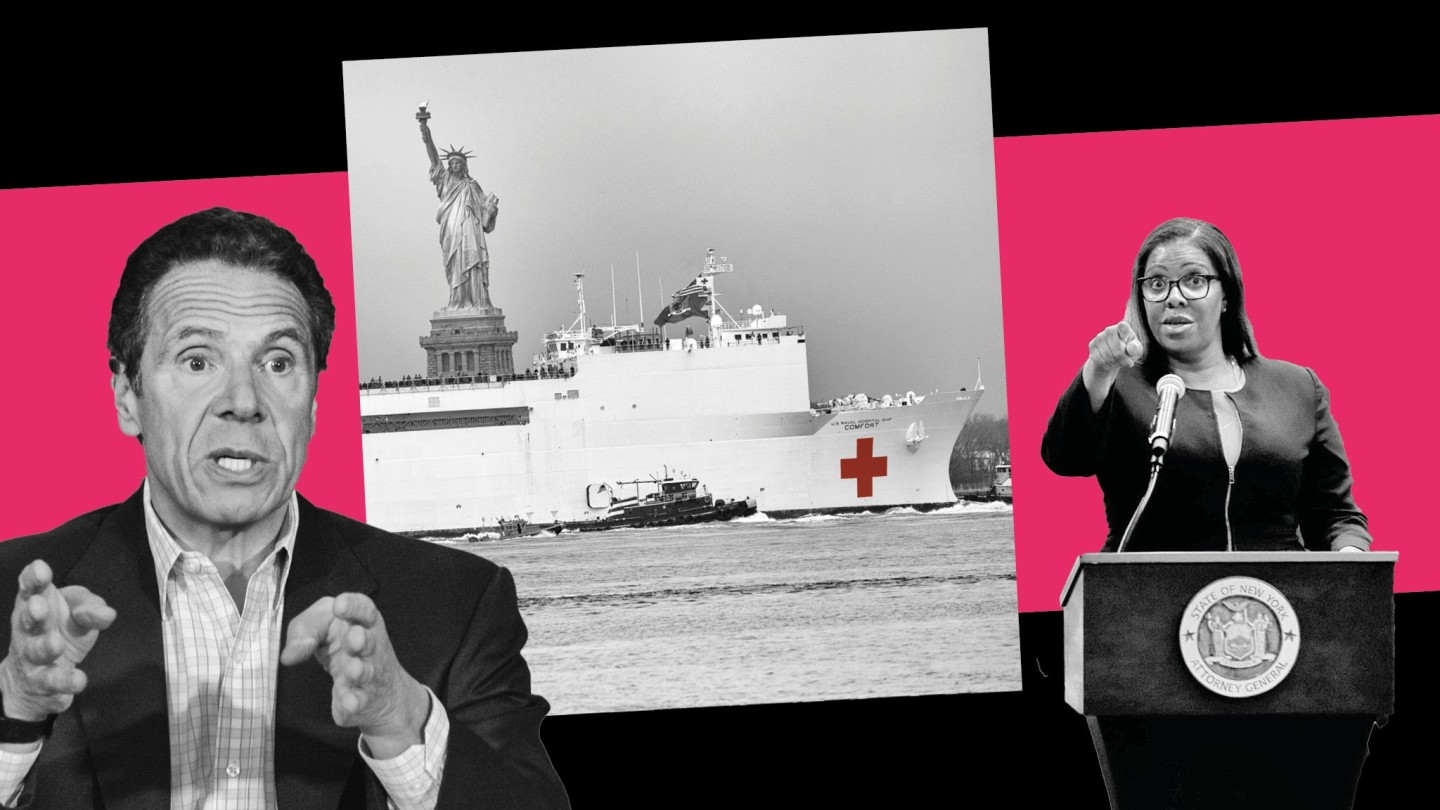
Roula Khalaf, Editor of the FT, selects her favourite stories in this weekly newsletter.
This story is part of a major Financial Times series Coronavirus: could the world have been spared?, investigating the global response to the crisis and whether the disaster could have been averted.
THE FIRST EVENT
A deadly quiet
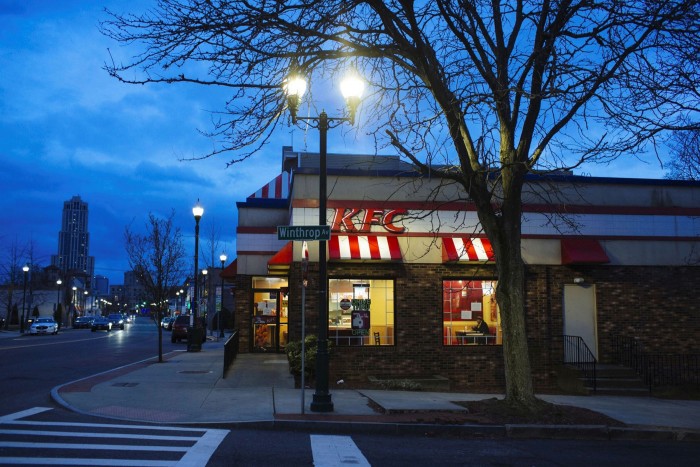
New Rochelle’s mayor watched as the National Guard rolled into the commuter hub north of New York City, wearing camouflage that offered no disguise in suburbia. A week after a local lawyer had been diagnosed with coronavirus, a mile-wide containment zone was being drawn around the virus’s first known superspreader event on the US’s east coast.
After a sleepless night, Mayor Noam Bramson called his city manager to spill out his worries. On March 10, he thought New Rochelle’s lockdown looked “dramatic”. But within days businesses and schools were shuttering, and a deadly quiet was descending across the US.
“I went through a series of worst-case scenarios. What will we do if there are food riots? How will we deal with civil unrest? What happens if the virus sweeps through our essential workforce?," says the 50-year-old mayor.
But in the world’s financial capital, just eight miles away, business bustled on. The New Rochelle lawyer, seen as “patient zero” for “community spread” because he had not visited any coronavirus hotspots, had commuted to the city.

Yet nothing in New York City was locked down. New Yorkers who were not sick or vulnerable “should be going about your life”, said Mayor Bill de Blasio on March 11, as the city’s largest conference venue boasted about a “buzzing” coffee trade show. Within 17 days, the Javits Center would become a field hospital.
“We thought we were dealing with a kitchen fire and could knock it down with a hand extinguisher. But in reality it was through the walls and ducts . . . it was everywhere. There were already 10,000 cases of Covid in NYC,” says Mr Bramson.
warning signals
Early overconfidence

The US had seen coronavirus coming as it swept from China through Asia, Europe and Iran in early 2020. “We’re prepared and we’re doing a great job with it, and it will go away,” said Donald Trump, US president, on March 10. A week earlier, New York governor Andrew Cuomo declared: “Excuse our arrogance as New Yorkers . . . [but] we don't even think it's going to be as bad as it was in other countries.”
As the National Guard responded to New Rochelle’s 108 recorded cases, Mr Cuomo observed reassuringly that New York City had just 36 and no deaths. But since then it has suffered more than 260,000 infections and buried 24,000 of its citizens, almost 10 times the number who died at the World Trade Center in 2001.
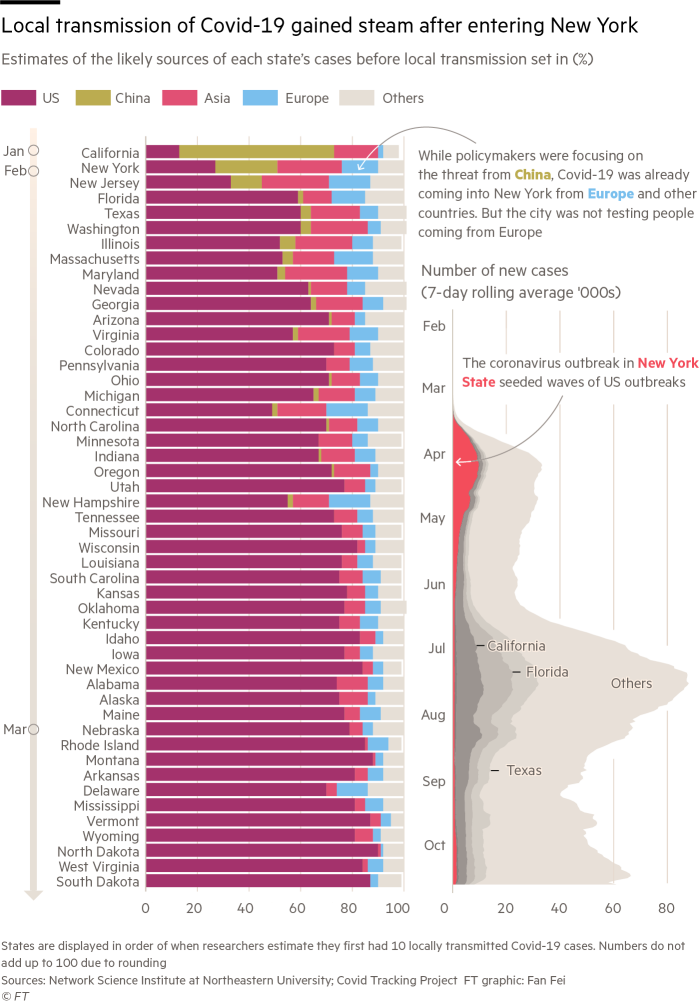
The virus was first spotted in the US in late January, in a man who had flown to Washington state from Wuhan, the Chinese city where it was discovered. Small outbreaks dotted the West Coast, but epidemiologists believe coronavirus did not gain steam until it entered New York from Europe in mid-February. It spread fast through the tightly-packed city and across the country.
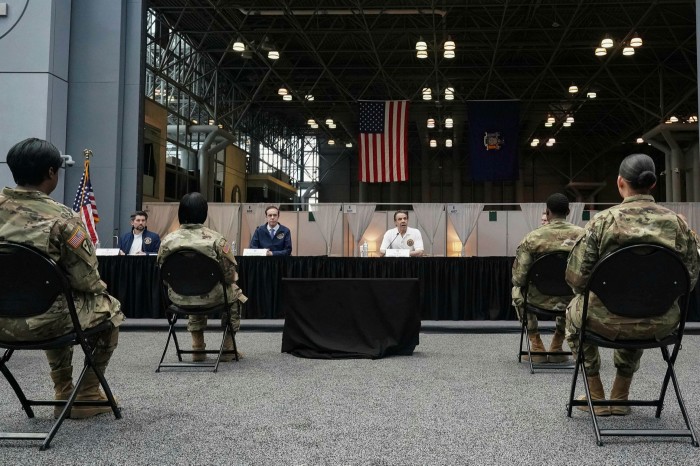
Mr Cuomo has been hailed for how he fought the ensuing fire, calmly informing the public and marshalling resources. His new book contrasts his crisis management skills with an incompetent national response. But a closer examination of those crucial early weeks tells a less flattering story, of divisions between New York and Washington; the governor and the mayor; the mayor and his health department; and the city’s richest and poorest hospitals.
Many of those divisions persist, raising questions about how many lessons have been learnt from New York’s fraught spring as it enters the winter with cases climbing once more.
To Gustavo Rivera, who leads the state’s health committee, New York City should have been locking down when the guardsmen reached New Rochelle, “but there was two weeks in which we did not do that.
“The notion that we should be celebrating when we still have more deaths than in most countries in the world is just insanity,” he says.
Our understanding of coronavirus has improved since March, but interviews with dozens of the people at the centre of New York’s response show that its leaders were warned of the threat and could have acted faster.
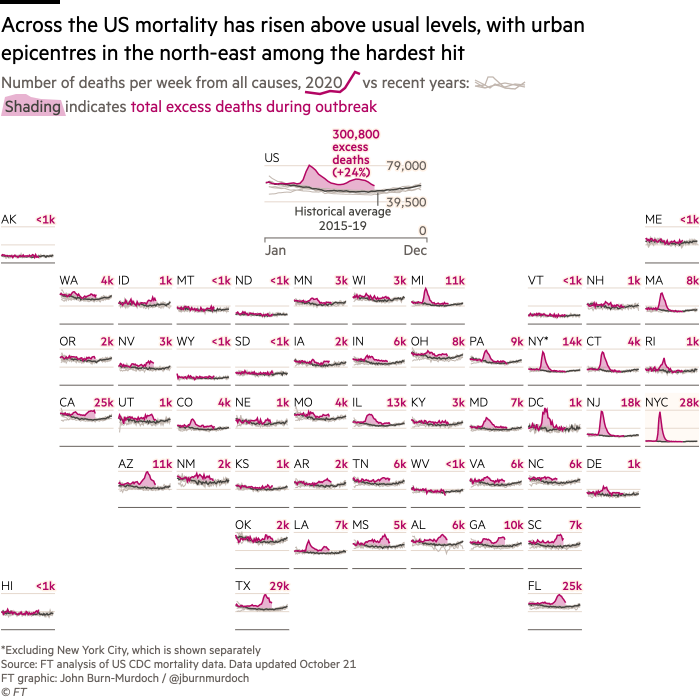
Dan Lucey is an epidemic chaser. Every year since the 1980s he has travelled to where a disease is spreading fast: HIV, West Nile, Sars, Ebola, Yellow Fever. At 10pm on December 30, the Georgetown University scholar got the news flash about a new disease that would be named Covid-19.
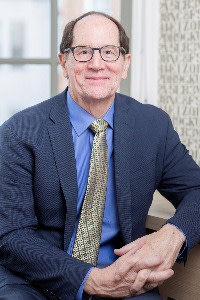
On January 23, he gave a chillingly prescient PowerPoint presentation to New York City’s public hospitals, warning that healthcare workers risked being infected if personal protective equipment ran short, explaining the threat of superspreader events and showing how masks helped Hong Kong to contain Sars.
Mr Lucey was no alarmist, but by February 6 he was desperate to make people listen. Speaking at Washington’s National Academy of Sciences, he unfurled two seven-foot posters, printed at a local FedEx. One showed a map of high-speed rail connections spewing out of Wuhan, representing how fast coronavirus could spread. The second was Rembrandt’s painting of “Belshazzar’s Feast”, showing the king celebrating a victory while the writing on the wall behind him reads that his days are numbered.
Mr Lucey now thinks he should have gone further: “I should have brought a drum and stood on top of the table and dressed in some bizarre clothes or something and said, ‘the pandemic is coming!’”
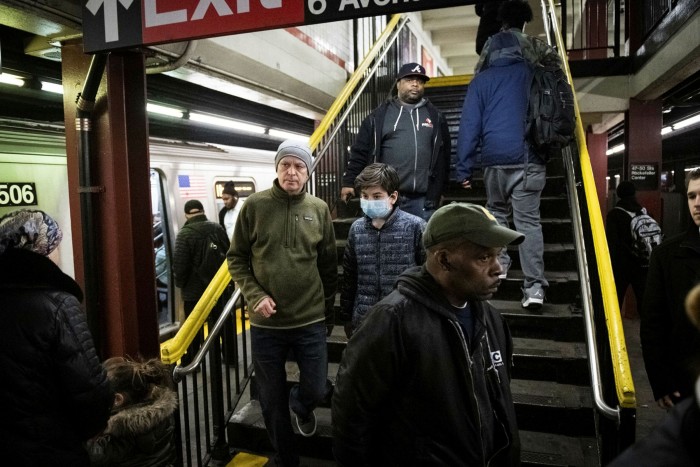
But New York’s leaders were trying to quell fears, not rouse them. “This is not something that you’re going to contract in the subway or on the bus,” Oxiris Barbot, the then public health commissioner, told the press on February 2. It is true, as she now emphasises, that scientists did not yet understand asymptomatic spread, but there was enough uncertainty to make this proclamation too confident.
Scares over previous epidemics hitting New York had proved unfounded, and the mayor and governor were treating the disease like Ebola — preparing for isolated cases, not a rampant outbreak. But Michael Osterholm, a University of Minnesota epidemiology professor, believes the public health community “lost six weeks” because they saw coronavirus as less of a threat than a flu pandemic. It was “more than a fog”, he says. “It was like Jell-O.”
‘Upper East Side hospitals could get anything; in Queens people wore garbage bags instead of gowns’
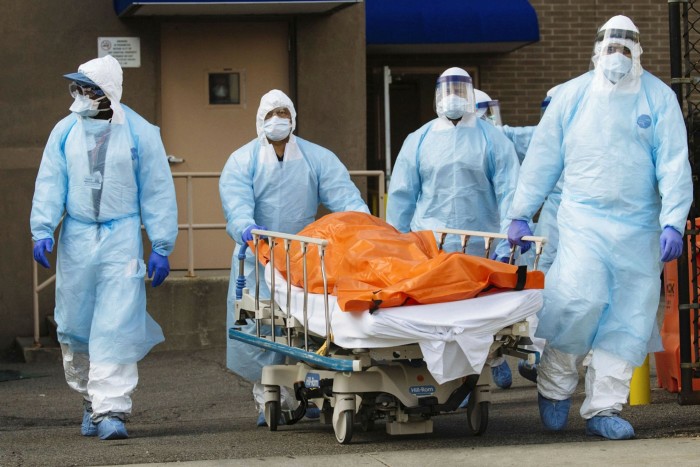
New York’s wealthy private hospitals had seen the writing on the wall, taking out loans and using board members’ connections to grab supplies. Mount Sinai started discussing Covid-19 on January 7 while Northwell Health, New York’s largest private employer, was stocking up on personal protective equipment from January and securing extra staff by February.
But the city’s healthcare system is divided. Non-profit hospitals, which often rely on government aid, could not afford to stock up just in case. At Downstate Medical Center, which serves a poorer Brooklyn community, the staff union had to help find PPE, according to Fred Kowal, the union’s president.
“In the Upper East Side of Manhattan hospitals you could get full access to anything, but in Queens and Brooklyn we had people wearing garbage bags because they couldn’t get surgical gowns,” he says.
“The rich fancy hospitals were getting tonnes of donations,” notes Amy Plasencia, an emergency medicine resident and union representative at the nearby Brookdale medical centre. “We needed donations and didn’t get them.”
Hospitalisations rose alarmingly. When the public health department first reported cumulative figures on March 24, 15,000 patients had been admitted for Covid-19. A week later, the total was 41,000. The week after that, 74,000. The failure to slow Covid-19’s progress strained hospitals, making it more deadly. A JAMA Internal Medicine study found that US survival rates were up to three times worse in hospitals with under 50 intensive care beds.
And poorer communities, often of colour, were hit hardest. In the Bronx, 634 Covid-19 patients were hospitalised per 100,000 of population, compared with 331 in Manhattan, where beds lay empty as richer residents fled to second homes.
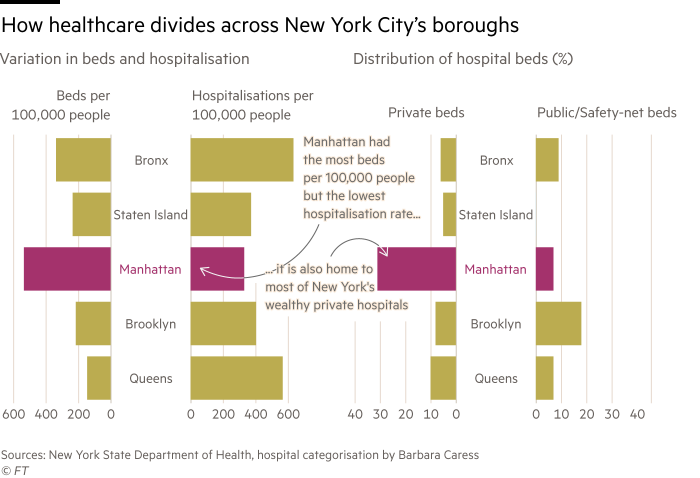
Andrew Cuomo, New York governor, ultimately ordered a sharp increase in the number of beds and brought the public and private systems’ heads together so overflowing poorer hospitals could transfer patients to hospitals with spare beds. But it was a wobbly start.
Mr Cuomo secured a US Navy hospital ship, which sailed up the Hudson River on March 30, but what New York really needed from the federal government was reliable testing.
Local leaders were pushing Washington’s Centers for Disease Control and Prevention for permission to do their own tests from late January, but did not get it until February 29, forcing them to make decisions with little data.
For more than a month, New York could only test people who had visited hotspots, and had to send every sample to the CDC whose first tests failed. Once it began its own testing, the state only had capacity to run 200 tests a day. That “fiasco” blinded the city “to how much virus was already in the community”, says Syra Madad, a New York epidemiologist.
The agency would not let even world-class New York labs like Northwell run their own tests. This, combined with Mr Trump’s dismissive tone, meant Washington was “not a player”, says Michael Dowling, Northwell’s chief executive: New York was left to fend for itself.

“We had our hands tied behind our back,” recalls Melissa DeRosa, Mr Cuomo’s closest aide, as federal authorities tested people arriving from Asia and Iran but kept flights open from Europe, where cases were rising. More than 1.7m people flew in from Europe in “the lost month” of February, she says, while “Covid-19 was silently ravaging the entire north-east”.
The day after getting permission to test, New York found its first confirmed case. Ms DeRosa says: “It was like, ‘Boom!’ Imagine what would have happened if New York had the ability to do our own testing earlier.”
Unable to catch the virus early, New York’s leaders would instead have to manage an explosion using the bluntest tool available: a lockdown.
It was a prospect that split New York’s businesses. Big global employers that had experienced Covid-19 elsewhere began grounding staff and closing offices in early March, says Kathryn Wylde, who runs the influential business lobby Partnership for New York City. But tourism and trade show groups issued three open letters between March 2 and 10, warning that restricting travel “threatens to harm the US economy”.
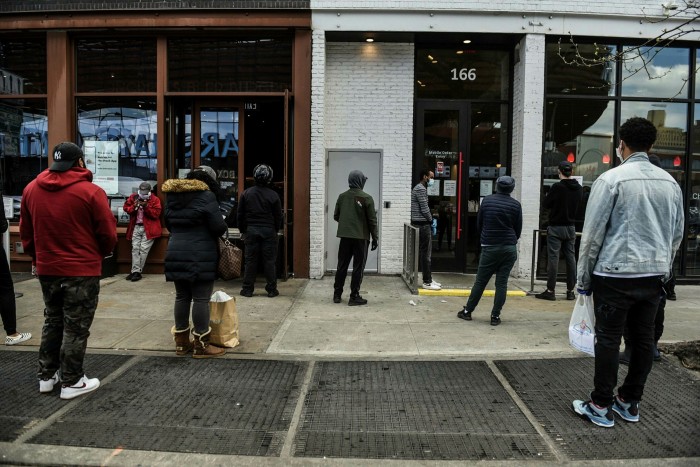
There was tension, too, with smaller businesses that remained “in denial” and were urging officials to go slower, says Ms Wylde. And Mr de Blasio had little sympathy for big business. He had pitched himself as a mayor for the little guy, after 12 years of the city being run by the billionaire Mike Bloomberg.
Mr Cuomo favoured gradual restrictions, but events were moving fast. On March 12, a member of the Broadway musical Moulin Rouge developed a fever, prompting the show’s producers to cancel that day’s shows. A fin de siècle drama about a consumptive courtesan had been silenced by a new disease, and within hours Mr Cuomo had closed every Broadway theatre.
That Thursday, when Wall Street suffered its worst fall since 1987, “the world was turning upside down in New York”, says Charlotte St Martin, Broadway League president.
By the weekend Ms DeRosa remembered feeling that somebody from Washington with pandemic expertise should have been telling New York what to do, “and they didn’t. The cavalry ain’t coming”.
On March 16, Mr Cuomo ordered restaurants and gyms to shut, although not before Mr de Blasio did one last workout, “undermining the governor” in Ms DeRosa’s view. But the virus was more rife than they realised, and some were already arguing that a faster, fuller lockdown was needed to avert a human and economic disaster.
Division and animosity
Inside the health department
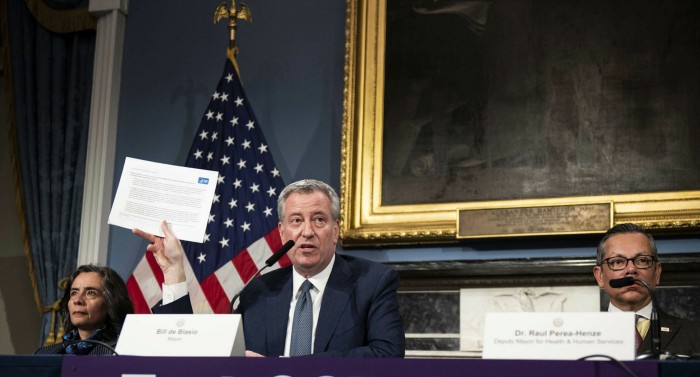
Inside the health department’s art deco headquarters, there had been calls for a lockdown since late February, insiders say. “We knew at that point we were in big trouble,” says one, who did not want to be named for fear of retaliation.
But years of division between Mr de Blasio and the department made it hard to get his ear. Now, the mayor preferred to listen to Mitch Katz, who runs the public hospital system but is not an infectious disease expert. In a March 10 memo, Mr Katz told the mayor there was “no proof” that locking down would work, and advocated a herd immunity strategy instead. One person involved in the city’s response said Mr Katz had been asked to provide a counterargument to shutting down large events but that no big events happened after this email.
This animosity was exacerbated by a mis-step by Dr Barbot. Emma Wolfe, Mr De Blasio’s chief of staff, got a message from the then health commissioner on March 6, telling her that the city should lock down.
Ms Wolfe summoned department heads to a Brooklyn emergency management centre used for responding to hurricanes and terror attacks, but once Dr Barbot arrived she had changed her tune, say people familiar with the matter. One person involved in the city’s response says she was still advocating gradual measures to forestall a complete lockdown by March 17. The incident damaged her credibility, a former city official said: “She’s now the boy who cried wolf.”
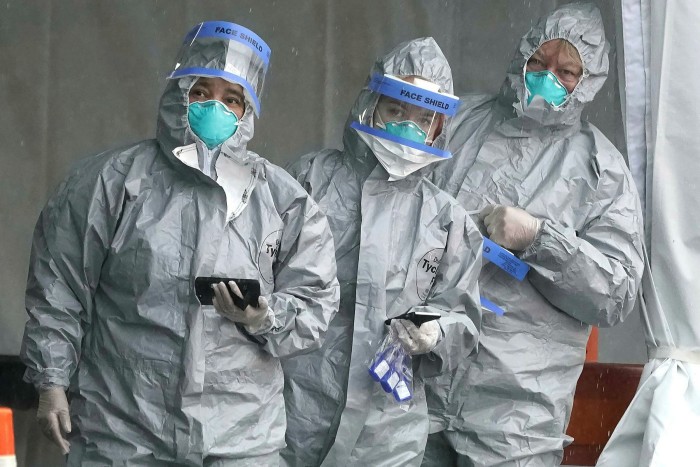
Dr Barbot denies changing her mind but confirms that her lockdown discussions with City Hall began around then, and “day after day the tone of those became increasingly more heated”. In August, she resigned, complaining that responsibility for contact tracing had been handed to Mr Katz’s department.
“I felt deeply disappointed that the expertise of the health department wasn’t fully leveraged,” she says. The department insider put it more starkly, saying it was “muzzled and gagged”.
While New York’s mayor and governor deliberated, a disparate group outside the official channels was pushing them to take more aggressive action.
James Krellenstein, co-founder of Prep4All, a campaign for preventive HIV medicines, had been warning officials of the lack of testing since February. Fearing that Mr de Blasio was ignoring his experts, he organised a March 9 letter urging the mayor to lock down.
Two days later, Steve Levin, a council member for Brooklyn, texted everyone he knew in City Hall and the governor’s office, saying a lockdown was needed within 48 hours. Reading epidemiological models online, he says: “I did the math and had an ‘Oh shit’ moment.”
If New York followed Italy’s experience, 10,000 New Yorkers would die by mid-April.
The failure of official channels led to unlikely alliances. Corey Johnson, the speaker of the council, started calling others who could help him “ring the alarm”. Rob Bennett, the mayor’s former social media director, was shaken to hear from him. If the speaker was not getting through to those in power, he remembers thinking, “we are fucked”.
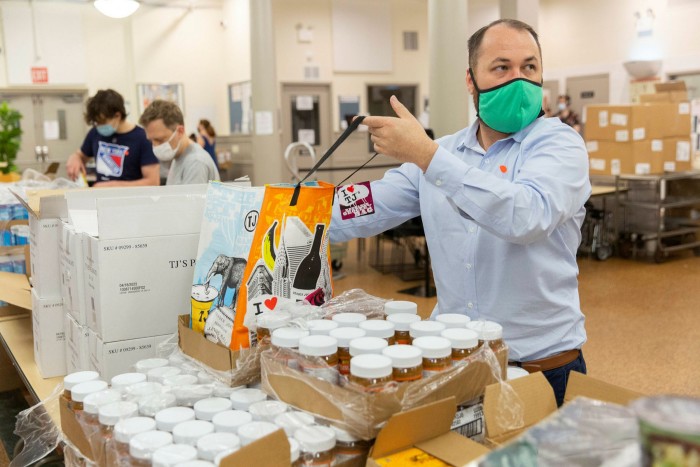
Late on March 13, Mr Johnson and Mr Levin held a call with Demetre Daskalakis, deputy public health commissioner, and Michael Donnelly, a tech data analyst who had published dire forecasts online.
Mr Donnelly says Mr Daskalakis was considering resigning on CNN after advising a lockdown only for the mayor’s office to respond that his models were inconclusive. Mr Daskalakis did not respond to a request for comment.
Mr Donnelly, who had worked at the Federal Reserve board with people who regretted not having issued louder warnings before the financial crisis, joined a “Covid Flatteners” Slack group and a Twitter thread trying to mobilise concerned techies and celebrities. Now he reflects: “I don’t think it’s a great way to run a country, city or state that counts on some nerdy data scientist with a laptop in Hell’s Kitchen.”
THE Wheels come off the bus
Battle over schools
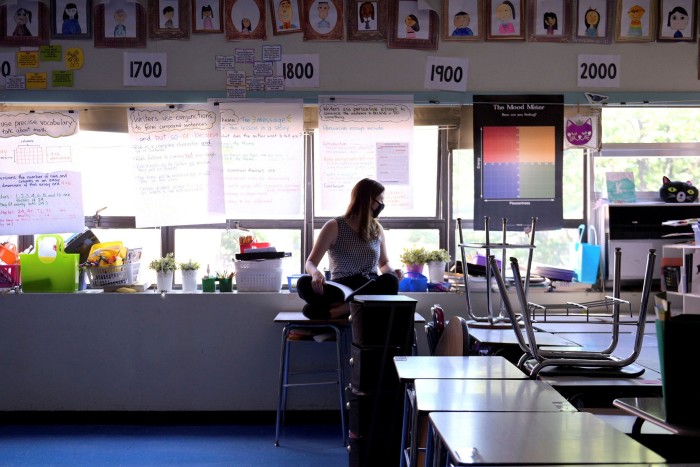
Meanwhile, a debate over closing schools was consuming City Hall. Mr De Blasio resisted the idea in part because he feared the impact on poorer parents with no childcare. “They’re the ones who can’t afford to go out to their house in the Hamptons,” explains one person who worked for him.
Private schools were closing by March 10 and a reluctant teachers’ union called three days later for public schools to follow. But it took five days, in which the governor intervened, for the mayor to agree.
“In retrospect,” says Dr Barbot, “I think we all wish we had closed the schools more rapidly.”
Emergency powers granted to Mr Cuomo meant the city needed his blessing to close businesses or schools, but City Hall was aghast to see him announce the closures, just before Mr de Blasio had planned to.
“The public was angry that the mayor had dragged his feet on schools for so long,” says Peter Ajemian, Mr Cuomo’s communications director. “We were concerned about the public, not the feelings of any one politician.”
“We were focused on the kids — not who could hold a press conference first,” counters Avery Cohen, Mr de Blasio’s deputy press secretary.
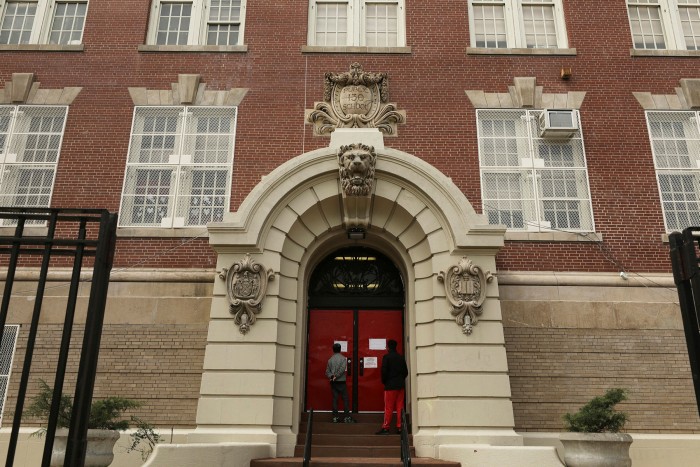
The always frosty relationship between the two men deteriorated. “The wheels started to come a little off the bus with the schools decision,” says the former city official, but “shelter-in-place is where it broke down”.
On March 17, Mr de Blasio declared that New York may need a “shelter-in-place” order. Activists were relieved, with one person who lobbied for a lockdown saying he thought this would be a turning point: “It did not occur to us honestly, naively, that the mayor [floating] a closure would then be used by the governor as a reason not to close. It blew our mind.”
Within hours a blindsided Mr Cuomo was telling the press that he had no intention of quarantining any city. He feared that a sudden lockdown would cause “panic on the streets”, says Wafaa El-Sadr, of Columbia University’s public health department. And having warned of the “massive disruption” of a closure, he was infuriated that the mayor seemed to be proposing exactly that, with no plan.
The state was following the data and trying to acclimatise the public, Ms DeRosa says: “The mayor had been so inconsistent and so slow to respond to the crisis . . . that he had no credibility with the press or the public. All his rhetoric did . . . was lead to confusion and misinformation.”
Ms Cohen rejects the “tough guy insults”, saying the mayor had been the first to call for closures, but “with each announcement, the city faced resistance from the state”.
Mr Cuomo ultimately announced on March 20 that he would put New York “on pause” 48 hours later, choosing his own phrasing rather than a terminology with echoes of 1970s nuclear scares. But to his critics, he wasted precious time asserting his authority.
“The mayor and the governor were in a constant pissing contest. The people in the middle get urinated on,” says Mr Rivera, the state senator.
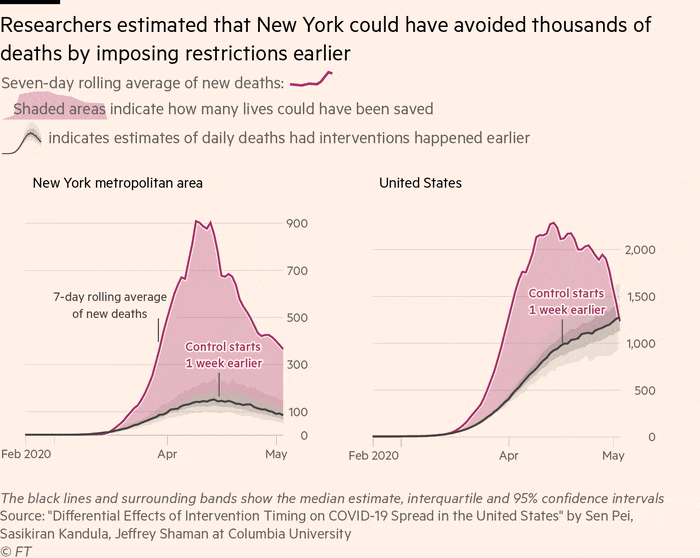
“Days were wasted because [the governor] was afraid of the term shelter-in-place,” echoes Jumaane Williams, New York City’s public advocate. “It cost people’s lives: 10 to 15 lives an hour.”
Mr Ajemian says the public advocate is “peddling misinformation” and Mr Cuomo’s “decisive action” saved lives, but one Columbia University study came to a similar conclusion, calculating that almost 19,000 lives could have been saved between March 15 and May 3 had the same actions been taken a week earlier, which works out to almost 16 lives an hour.
New York’s attorney-general Letitia James is famous for her fights against slumlords and President Trump. But worried about delays to locking down, she played peacemaker, bridging the gap between mayor and governor in private.
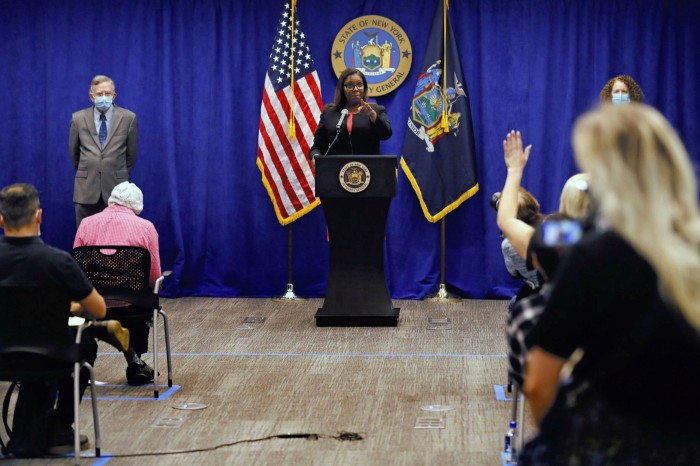
On March 19, she organised a call with religious, civic and business representatives to build support for a lockdown. Several participants said that two business leaders — Ms Wylde and Bill Rudin, chair of the Real Estate Board of New York — sounded unconvinced.
“They were like, ‘Well, no, we can’t move so quickly, this is going to destroy business’,” remembers one.
That is not Ms Wylde’s recollection. She and Mr Rudin had been told in confidence that Mr Cuomo would announce the “pause” the next day, she says, so wanted to discourage “hysteria” while defending his need to balance health and economic interests. Still, her group published a survey on March 20 saying that a lockdown was among its members’ top fears.
Property executives have donated heavily to Mr Cuomo and some were quietly lobbying him, says one person who spoke to several of them at the time: “They were saying, ‘If you shut down New York, it will never reopen’. We were saying, ‘If we shut down right now it will be an easier and better path to reopening’.”
Coronavirus: could the world have been spared?
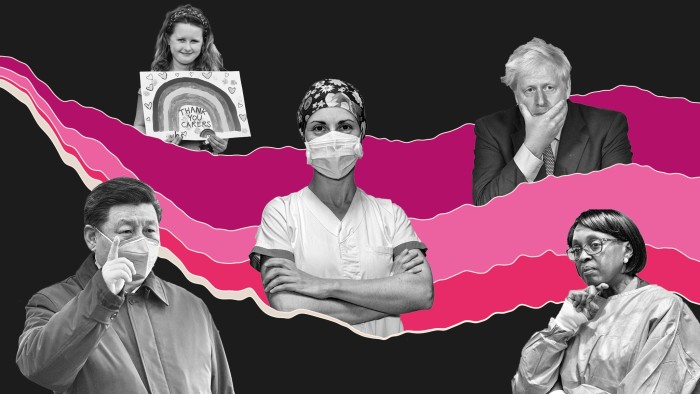
The coronavirus pandemic has killed more than 1m people across the globe. But could it have been averted? A unique FT investigation examines what went wrong — and right — as Covid-19 spread across the world
Part 1: China and Covid-19: What went wrong in Wuhan
Part 2: The global crisis — in data
Part 3: Why coronavirus exposed Europe's weaknesses
Part 4: Will coronavirus break the UK?
Part 5: How New York’s missteps let Covid-19 overwhelm the US
Part 6: What Africa taught us about coronavirus, and other lessons the world has learnt
But Mr Cuomo’s team says he was listening to experts rather than lobbyists, and Mr Rudin told the call that occupancy in his company’s offices had plunged to just 6 per cent, showing how many employers had already shut.
The day after the call, Mr Cuomo announced the “pause”. The governor had feared the impact of even a two-week lockdown: it ended up lasting almost two and a half months.
New York avoided neither a public health crisis nor an economic crisis, but polls suggest Mr Cuomo’s popularity is at its highest since he took office in 2011. He has recast himself as a decisive leader, whose “#NYTough” sloganeering has prevailed over critiques of how he handled the lockdown. The only criticism that has stuck is over his directive that elderly Covid-19 patients should be readmitted to nursing homes, as such facilities recorded more than a quarter of New York’s deaths from the disease.
For Mr Williams, the public advocate, though: “It is very hard to watch the governor selling books when tens of thousands of lives were lost.”
Lessons TO BE learnT
The consequences of inaction
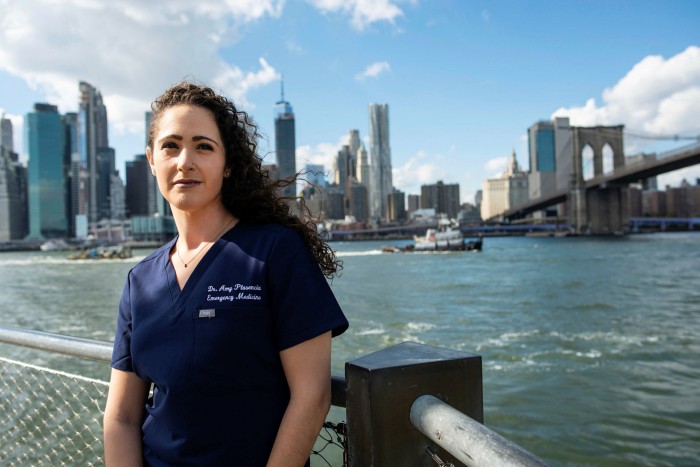
While leaders prevaricated, New Yorkers were harbouring infections that would soon hospitalise them. Amy Plasencia, the Brooklyn-based emergency medicine resident, says they were unprepared for the “sheer speed” of patients hitting their wards. “In those early days before the city shut down, everything was still open, but we still had hundreds of patients,” she says, recalling her colleagues asking: “Why are we not shutting down? Why is the entire country not shutting down?”
The time it took to answer that question cost lives, thousands of them, according to the Columbia academics’ calculations.
And while those who remained in the city, often essential workers in overcrowded poor and minority communities, were hit worst, many left, spreading the virus across the country.
Genetic research has found that most US Covid-19 infections have been of the European strain that landed in New York, not the Chinese strain of the first west coast cases. David Engelthaler, a genomic epidemiologist at Arizona’s Translational Genomics Research Institute, says that earlier detection could have limited the spread. Instead, the city circulated it like “Grand Central station”.
In other words, the virus radiated out of New York, just as Mr Lucey warned it had from Wuhan. And by restricting testing, the Trump administration missed the chance to save not just a city with few Trump voters like New York, but to stop the virus in its tracks before it hit red states and swing states too.
Scott Stringer, who as New York City’s comptroller is akin to its chief financial officer, is now investigating the key decisions in its lockdown debate. “The way you do a better job next time is by learning what went wrong this time,” he says.
New York’s public advocate has reached his own conclusion. “We insisted on relearning lessons others had learnt,” says Mr Williams. “Our lack of action probably harmed the entire country.”
One stark statistic supports his verdict: the US, with just 4 per cent of the world’s population, has suffered more than a fifth of the world’s deaths from Covid-19.
This story has been updated to correct a quote from Mayor Bramson
Join the conversation
How has the pandemic been handled where you live? What has gone right or wrong for you during this time? Do you work in a sector that was hit hard by lockdowns? Or have you managed to adapt your life positively? Share your experiences in the comments below.
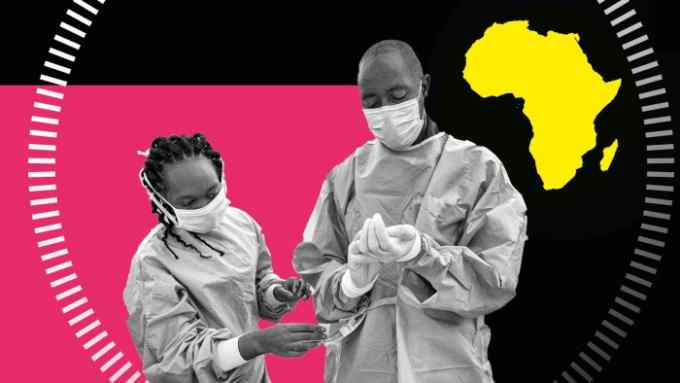
Comments